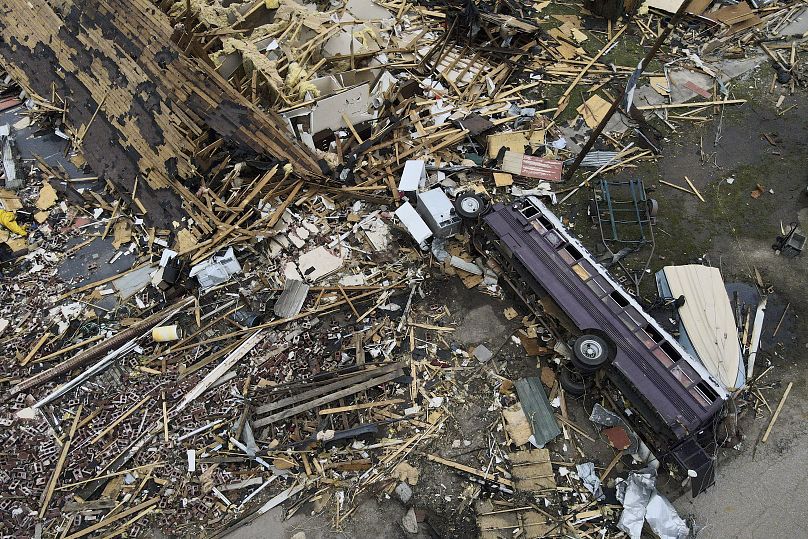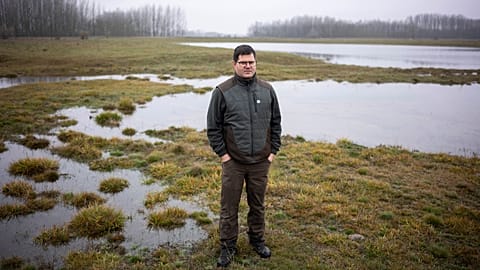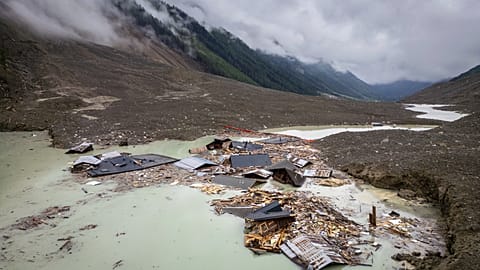Over the past century, the number of deaths from extreme weather, climate and water-related events has dropped significantly.
Extreme weather, climate and water-related events caused 11,778 reported disasters between 1970 and 2021, according to the World Meteorological Organization (WMO).
These disasters killed more than 2 million people and caused $4.3 trillion (€4 trillion) in economic losses.
But, during those 51 years, something changed. A report from the WMO published two years ago found that at the beginning of the period, there were more than 50,000 deaths worldwide each year linked to disasters.
This had dropped to below 20,000 by the 2010s. And the WMOs latest figures, released on Monday (22 May), show that there were 22,608 disaster-related deaths in 2020 and 2021 combined.
Improved early warning systems and coordinated disaster management have significantly reduced the number of human casualties over the past half a century, the WMO says.
What are early warning systems and how do they help?
At their most basic, early warning systems alert people close to a potential disaster about what might or definitely is about to happen and how it could affect them.
On a deeper level, they are integrated systems for monitoring hazards, forecasting and prediction and disaster risk assessment as well as communication and preparedness activities. Systems like this give communities, governments and businesses - essentially everyone - time to take action and reduce risks before a disaster occurs.
There are four parts to an effective early warning system. The first is collecting as much data as possible about potential risks. This is then used to monitor, forecast and predict whether it is likely to happen and what the consequences will be.
The information on impact and likelihood is communicated by an official source in a timely, accurate and effective way with actionable warnings. This can include things like location-based text messages that warn people of imminent storms, floods, wildfires or other extreme weather events.
The final part requires everybody, from governments to individual citizens, to be prepared to respond to the warnings they receive.
Ensuring that these elements work together, across all sectors in a coordinated way, can mean the difference between life and death.
WMO chief Petteri Taalas gives the recent example of Cyclone Mocha. It caused widespread devastation in Myanmar and Bangladesh, impacting some of the poorest communities.
“In the past, both Myanmar and Bangladesh suffered death tolls of tens and even hundreds of thousands of people,” he explains.
“Thanks to early warnings and disaster management these catastrophic mortality rates are now thankfully history. Early warnings save lives.”
Why do early warning systems need to improve?
The frequency of extreme weather events has dramatically increased in the last 20 years.
But only half of all countries have early warning systems in place with especially low coverage in Small Island Developing States (SIDS), Least Developed Countries (LDCs) and in Africa. This means that one in three people on the planet isn’t covered by an adequate system.
SIDS and LDCs also suffered disproportionately high economic costs in relation to the size of their economies. Some disasters caused economic losses in SIDS that were more than 100 per cent of their GDP.
UN Secretary-General António Guterres launched an initiative at COP27 last year to ensure every person on Earth is protected by early warning systems by 2027.
The World Meteorological Congress opens today (22 May) where experts, governments and top UN representatives will come together to discuss a range of issues. One of their key priorities is accelerating and scaling up the initiative to provide early warning systems for everyone on Earth.



















